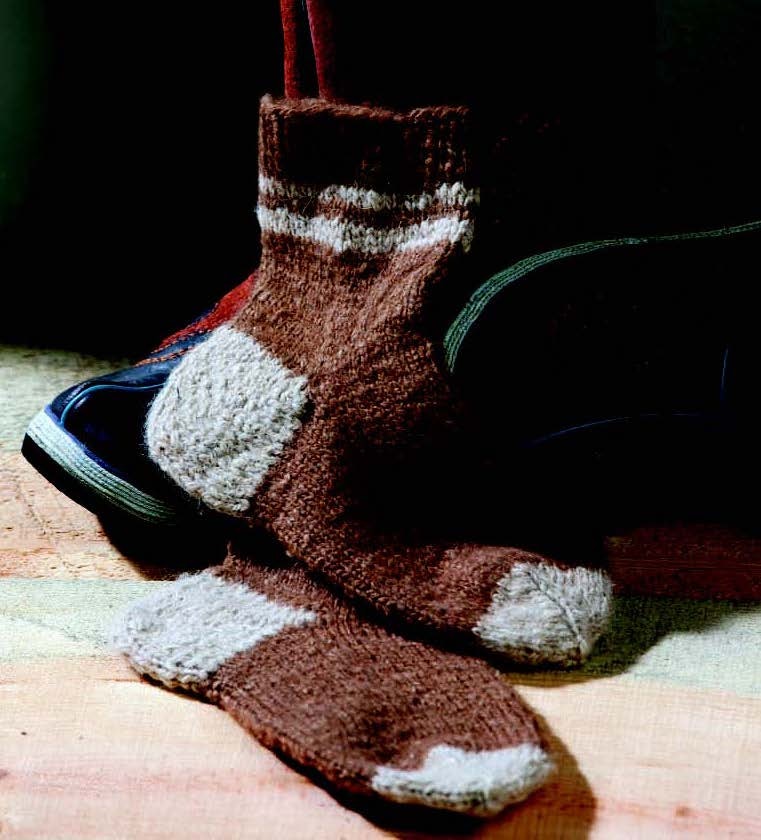At an editorial planning session, Linda Ligon (Long Thread Media’s founder and PieceWork’s creative director) dropped a pair of socks on the table, ones she’d acquired at a market in the Gobi desert. “Camel hair,” she said, “Now that’s something, don’t you think?” And it was. As we examined them, prickly and stiff, exotic and practical, we started asking questions. Why socks in the Gobi Desert? How did the knitter turn the heel? Heel down or toe up? Were they knit with single ply or double yarn? Could we reproduce them with any authenticity? Would we want to?

Gobi Desert Socks by Donna Druchunas, Knitting Traditions Fall 2011
Yes and yes! Donna Druchunas figured out the technical aspects of the socks, wrote a pattern, and knitted it up with beautiful yarn spun from camels that we sourced through the good people at Snow Leopard Trust; Linda supplied a bit more information about the where and the why and we published it in the Fall 2011 issue of Knitting Traditions.
And this is often how a Knitting Traditions article begins. Personal stories or artifacts, family history, or specific events are explored and connected to something larger in the framework of textile and even world history. Wherever we go, whatever period of time we’re traveling in, knitting has been there before us, keeping us warm, expressing our beliefs, helping to pass on and maintain our cultural traditions. Linda Ligon has always sensed (perhaps since she imagined PieceWork into being decades ago) that its readers had a thirst for the history of knitting and wanted meaty articles to satisfy a deep intellectual curiosity. They wanted intriguing projects to create, but mostly they wanted a story, a really good story.
So for the last few years, we’ve devoted ourselves to discovering and bringing to life the captivating narrative of knitting in PieceWork’s twice-a-year special publication, Knitting Traditions. Stories like the history of gloves as detailed by Nancy Bush, where we learned that German merchants doing business in tenth century England had to pay a duty of five pairs of gloves to King Ethelred the Unready; or the tender story of Bertha Mae Shipley who learned to knit as a young girl while in an Indian school in Oklahoma; or Martin Polly’s exploration of what historians can learn from swimsuit and sweater patterns of early- twentieth-century-England. Who could forget the Monmouth cap knit for the battle of Agincourt or the Buff Mittens? What’s your favorite?

